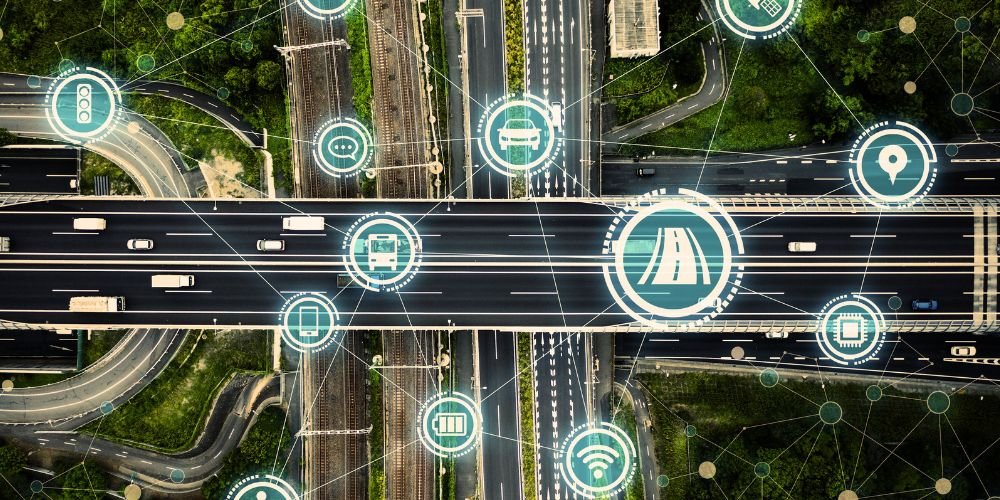Vehicle-to-infrastructure (V2I) communication represents a cutting-edge paradigm in the automotive industry, revolutionizing how vehicles interact with their surroundings. This comprehensive exploration delves into the fundamental principles, key components, recent innovations, notable applications, and the transformative impact of V2I communication on the future of transportation.
Understanding Vehicle-to-Infrastructure (V2I) Communication
V2I communication is a technology that enables seamless communication between vehicles and the infrastructure that supports them. This bidirectional exchange of information promises to enhance road safety, optimize traffic flow, and lay the groundwork for integrating autonomous vehicles into our transportation networks.
Key Components of Vehicle-to-Infrastructure (V2I) Communication
The effectiveness of V2I communication relies on several key components working in tandem:
- On-Board Units (OBUs): Vehicles equipped with OBUs communicate between the vehicle and the infrastructure. These units transmit and receive critical information, including traffic conditions, road signals, and safety warnings.
- Roadside Units (RSUs): Installed along roadways, RSUs act as communication nodes that collect and disseminate information to vehicles. These units are strategically placed at intersections, traffic signals, and other key points to facilitate efficient communication with vehicles passing through.
- Communication Protocols: Standardized communication protocols, such as Dedicated Short-Range Communication (DSRC) or Cellular Vehicle-to-Everything (C-V2X), ensure uniformity and compatibility across diverse vehicles and infrastructure components. These protocols lay the foundation for reliable and secure information exchange.
Recent Innovations in Vehicle-to-Infrastructure (V2I) Communication
Recent innovations have propelled V2I communication to new heights, addressing key challenges and expanding its capabilities:
Integration of 5G Technology
The integration of 5G technology has significantly enhanced the speed and reliability of V2I communication. With faster data transfer rates and lower latency, 5G enables real-time communication, paving the way for more responsive and dynamic traffic management systems.
Artificial Intelligence (AI) Applications
Infusing Artificial Intelligence (AI) into V2I systems brings predictive capabilities to traffic management. AI algorithms analyze historical and real-time data to anticipate traffic patterns, optimize signal timings, and enhance road efficiency.
Cloud-Based Infrastructure
Adopting cloud-based infrastructure in V2I communication allows for centralized data storage and analysis. It facilitates more comprehensive traffic management strategies, including adaptive signal control and proactive incident response.
Notable Applications of Vehicle-to-Infrastructure (V2I) Communication
Vehicle-to-infrastructure (V2I) Communication extends beyond basic information exchange, influencing various aspects of transportation and urban planning:
Traffic Flow Optimization
One of the primary applications of V2I communication is optimizing traffic flow. By providing real-time information on traffic conditions, road closures, and accidents, V2I systems enable adaptive traffic signal control, reducing congestion and enhancing overall road efficiency.
Enhanced Road Safety
V2I communication is crucial in enhancing road safety by providing vehicles with information about potential hazards, such as construction zones, pedestrians, and emergency vehicles. This real-time awareness allows vehicles to take preventive measures, mitigating the risk of accidents.
Autonomous Vehicle Integration
As the automotive industry advances towards autonomous vehicles, V2I communication becomes a linchpin for their successful integration. V2I systems provide autonomous vehicles with essential information about the road environment, traffic conditions, and potential obstacles, enabling safer and more efficient navigation.
Smart Parking Solutions
V2I communication facilitates smart parking solutions by providing real-time information on parking space availability. Drivers can receive notifications about nearby parking spaces, reducing the time spent searching for parking and minimizing traffic congestion in urban areas.
Challenges in Vehicle-to-Infrastructure (V2I) Communication
While V2I communication holds immense promise, several challenges impact its widespread adoption and effectiveness:
Standardization and Interoperability
The lack of standardized protocols and interoperability between different V2I systems poses a significant challenge. Establishing universal standards ensures seamless communication between diverse vehicles and infrastructure components.
Cybersecurity Concerns
The interconnected nature of V2I communication systems makes them susceptible to cybersecurity threats. Safeguarding these systems against unauthorized access and potential cyber-attacks is a critical consideration for ensuring the reliability and safety of V2I communication.
Infrastructure Investment
Widespread implementation of V2I communication requires significant infrastructure investment. Installing and maintaining the necessary OBUs and RSUs and upgrading existing traffic management systems necessitates substantial financial commitment from government bodies and private entities.
Future Trends in Vehicle-to-Infrastructure (V2I) Communication
As technology continues to advance, the future of V2I communication promises exciting trends that will further redefine its capabilities and applications:
Edge Computing Integration
The integration of edge computing in V2I communication systems will reduce latency and enhance real-time data processing. This evolution allows for quicker decision-making and more responsive traffic management, especially in dynamic and unpredictable urban environments.
Expansion of Cooperative V2I Systems
Cooperative V2I systems involve collaborative communication between vehicles and infrastructure. The future will witness an expansion of cooperative systems, enabling more sophisticated interactions, such as platooning, where vehicles travel closely together to improve fuel efficiency and traffic flow.
Integration with Smart Cities
Vehicle-to-infrastructure (V2I) Communication will play a pivotal role in developing smart cities. Integrating V2I systems with other smart city technologies, such as IoT sensors and data analytics, will result in more comprehensive and adaptive urban planning.
Augmented Reality (AR) Interfaces
Incorporating augmented reality interfaces into V2I communication will enhance drivers’ awareness of the road environment. AR overlays can provide real-time information, navigation guidance, and safety alerts, creating a more immersive and informative driving experience.
Conclusion
Vehicle-to-infrastructure (V2I) communication is a transformative force in the evolution of transportation systems. From optimizing traffic flow to enhancing road safety and facilitating the integration of autonomous vehicles, V2I communication holds immense potential for shaping the future of mobility. Despite existing challenges, ongoing innovations in technology, infrastructure, and standards signal a promising future for V2I communication. As research and development continue to push the boundaries of what is possible, V2I communication is poised to become a cornerstone in creating more efficient, safer, and adaptive transportation networks globally.










